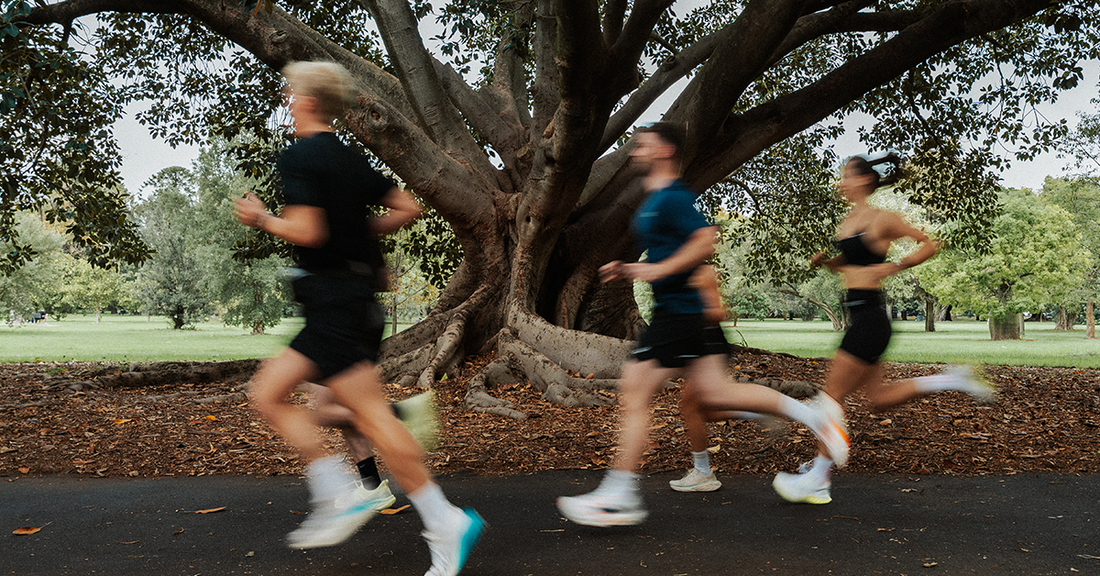
Running Belts 101: How to Wear One, Where It Should Sit, and Choosing the Best Belt for You
Whether you're training for your first half marathon or heading out for a casual 5K, a running belt can be a game-changer - letting you carry everything you need without even noticing it's there. But if you’ve ever struggled with a belt that bounces, slides, or just doesn’t sit right, you're not alone.
In this guide, we’ll answer some of the most commonly searched questions about running belts:
How to wear a running belt
Where a running belt should sit
Which running belt is best for your needs
How to Wear a Running Belt (Without the Bounce)
The way you wear your running belt can make or break your run. Here’s what seasoned runners recommend:
- Wear it snug, but not tight. A belt that’s too loose will bounce; too tight, and it can restrict breathing.
- Avoid friction. Look for smooth seams and avoid belts with bulky zippers or hard materials near your skin.
-
Pack it strategically. Heavier items like your phone or gels should be evenly distributed, and close to your body.
Where Should a Running Belt Sit?
This is one of the most searched questions - and for good reason. Placement matters.
- Best placement: Around your natural waist, the narrowest part of your torso. This prevents the belt from sliding up or down mid-run.
- Avoid the hips: Belts worn on the hips tend to ride up toward the waist anyway, especially when fully loaded.
Some runners prefer wearing low-profile belts higher up on the back and rotating it to access gels—but be mindful that this can interfere with race bib placement.
Which Running Belt Is Best? (And Why EverRun Belts Lead the Pack)
At EverRun, we’ve tested dozens of belts over the years - and that’s exactly what inspired us to create the EverRun series: premium belts designed for zero bounce, high comfort, and practical storage.
Best Daily Running Belt
EverRun Go – Essential Belt
Lightweight, minimal, and ideal for carrying just the essentials - your phone, keys, and maybe a gel or two. Perfect for shorter runs or runners who like to keep it simple.
Best Performance Belt
EverRun Flex – Performance Belt
A snug, low-profile design that hugs your waist without restricting movement. Built for runners who want to carry 3-4 gels and a phone without any bounce—great for tempo runs or race day.
Best Long-Distance/Endurance Belt
EverRun Max – Endurance Belt
Designed with long runs and marathons in mind, this belt offers added volume for fuel, hydration powder, or even a soft flask. Built with sweat-resistant materials and multiple compartments to keep your gear dry and organised.
Other Ways to Carry Gels and Essentials
If belts aren’t working for you, or you’re gearing up for a marathon where you need extra fuel - try these:
- Shorts with built-in gel pockets – Zero bounce, always accessible.
- Arm sleeves – Some runners stash a gel in each arm.
- Running vests – Especially useful for long-distance runs or trail races.
- Handheld bottles – Good for short to mid-distance runs with hydration.
Final Thoughts: What’s the Best Running Belt for You?
The best running belt is the one that fits your body, your gear, and your style of running. Whether you go for a snug compression belt, a hydration-ready setup, or our own EverRun Go - Essential Belt (crafted for zero bounce, full comfort, and optimised for marathon-level gear), it’s all about testing what works for you.
Still unsure? Try this checklist:
Does it stay in place around your natural waist?
Does it carry everything you need without overloading?
Is it made of sweat-resistant or waterproof material?
Does it fit snugly and feel comfortable even after 10K+?
If the answer is yes, you’ve found your match.



